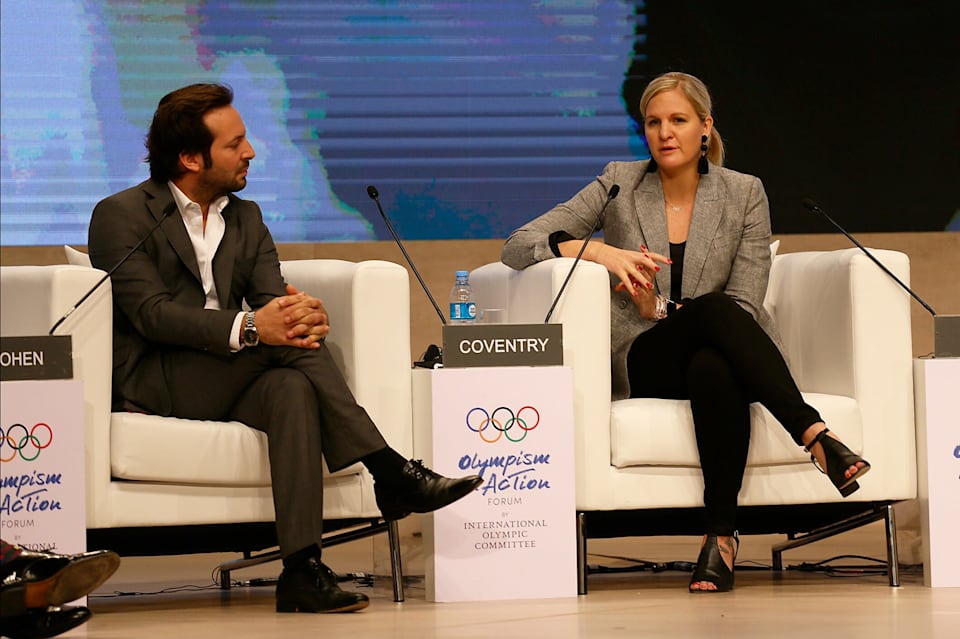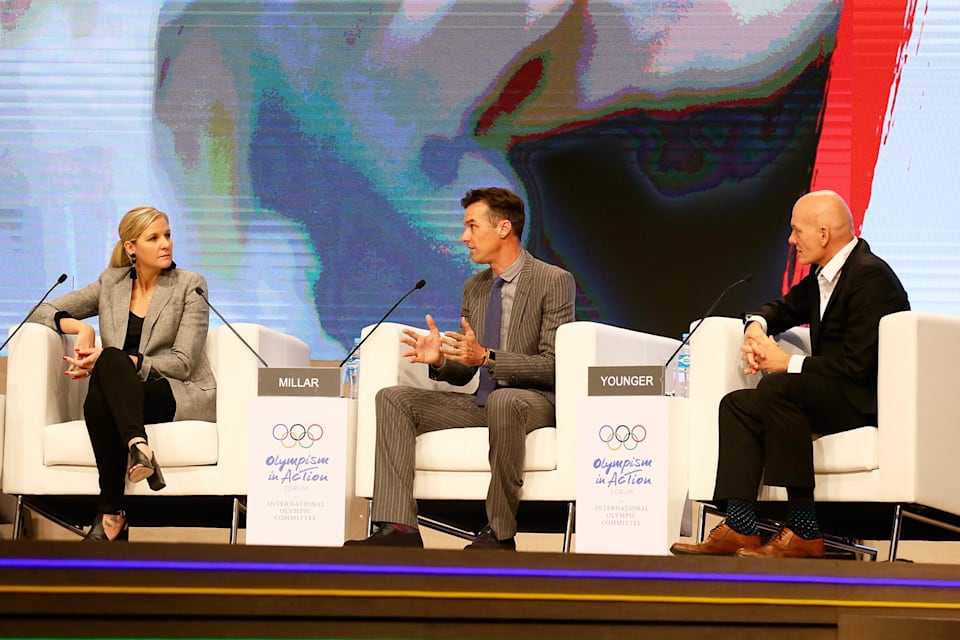Combatting doping in Sport
“I was a doper,” said David Millar, former pro cyclist and founder of CHPT3, at the “Combatting doping in Sport” panel discussion at the Olympism in Action Forum today. “When the noise is that strong against you, you eventually give up. My moral compass was smashed.”
The conversation today in Buenos Aires raised a wide range of difficult issues facing the Olympic Movement in its ongoing fight against doping, including: ensuring independent testing that is free of conflicts of interests; breaking the “rule of silence” to encourage people to come forward and identify violations; and striking the right balance between protecting athletes’ civil rights and strictly enforcing anti-doping measures.
But the talk began with more personal and specific reflections, like Millar’s on why and how athletes end up doping today.
Kirsty Coventry, five-time Olympian from Zimbabwe and Chair of the IOC Athletes’ Commission, talked about how the culture that surrounds young athletes can be such an important factor when it comes to temptations like doping. “Athletes trust their entourage—the people around them—right from the get-go. If you’re not lucky enough as a young athlete to have people who think you don’t need extra substances to take more advantage of the situation, it’s easy for them to be moulded… And having a medal could completely change their lives and their family’s lives.”

Protecting athletes from sliding into doping requires a joint effort, and in recent decades it has become one.
While the IOC was a precursor in the protection of clean athletes with the establishment of the IOC Medical Commission in 1962 and the first list of prohibited substances, fighting doping is a joint effort. In 1999, the IOC created the World Anti-Doping Agency (WADA). The IOC provides 50 per cent of the funding for WADA, with the other half coming from governments around the world.
In 2017, the IOC took the initiative and kick-started the creation of the International Testing Agency (ITA), which has become operational this year. The ITA is a not-for-profit organisation with the mission to offer comprehensive anti-doping services to sports bodies, independent from sporting or political powers. Benjamin Cohen, Director General of the ITA , said:
There is now a call from athletes and community for transparency, and that’s the point of the ITA. It’s part of rebuilding trust.INTERNATIONAL TESTING AGENCY (ITA)
The IOC is always looking to be at the forefront to protect athletes’ health and ensure a level playing field. In this spirit, it has been endeavouring, since Rio 2016, to increase the independence of the anti-doping programme of the Games, with sanctioning being made independent from the IOC. At the Olympic Winter Games PyeongChang 2018, testing became independent, and the IOC funded the Pre-Games Testing Taskforce which was run independently and under the supervision of WADA to increase the level of testing prior to the Games. The IOC has also put a strong re-analysis programme in place and is storing all doping samples from Olympic Games for 10 years, re-analysing when new testing methods are developed, and based on new intelligence available. This programme is also being handed over to the ITA for greater independence.

Target testing is only one part of the picture, as the fight against doping starts well before the point of sanctions against violators: there are extensive educational efforts made to make athletes and others aware of the risks and consequences of doping in order to create a zero-tolerance environment.
The Forum also saw an expert debate between Michael McNamee, Professor of Applied Ethics at the College of Engineering at Swansea University, and Andy Miah, Chair in Science Communication and Future Media at the School of Environment and Life Sciences at the University of Salford, on the very nuanced meaning of the expression “performance-enhancing” in relation to doping. Athletes do things all the time, after all, to improve their performance, from wearing special gear to getting surgery. At what point does behaviour cross the line into something that should be sanctioned to keep international sport fair?

McNamee offered an example: “Let’s imagine a genetic intervention that allows you to feel less pain. In ordinary life you’d say that’s a great intervention. In sport, pain is a critical feature of the [athletic] experience. So if you go up against someone who doesn’t feel this pain, that’s not a fair contest.”
In the end, there has to be a negotiation, not just a line we tell athletes not to cross.UNIVERSITY OF SALFORD
Another breakout session looked at deterrence of and education efforts against doping. With technological innovations happening at breakneck speed, it’s difficult for testing authorities to stay ahead of the latest doping methods. What should be done well before it gets to the testing and sanction stage, how can we increase the awareness of the entourage, and when might outreach and education be able to deter young athletes from doping in the first place? The goal is to quieten the “noise” David Millar described in his own experience.